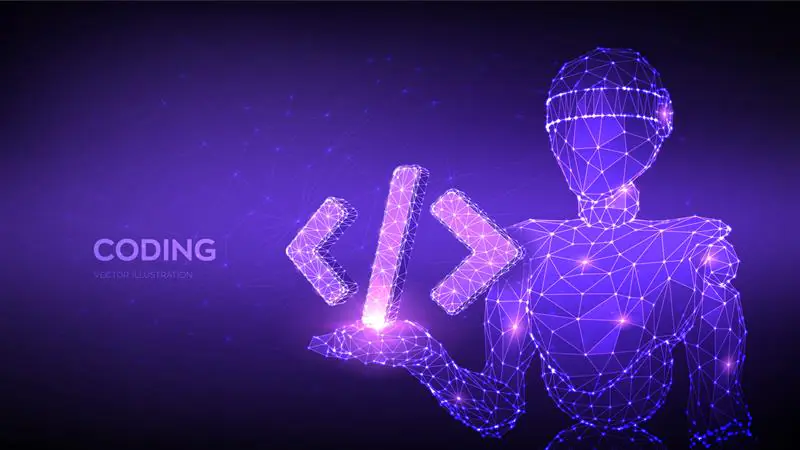In today’s rapidly expanding global marketplace, businesses are increasingly turning to Natural Language Processing (NLP) technologies to break down language barriers and provide seamless experiences to customers worldwide. As companies scale internationally, the ability to understand, interpret, and respond to various languages in real-time has become crucial. Enter Multilingual NLP models—powerful tools that harness the capabilities of machine learning and deep learning to process and understand human languages across different regions.
This blog will delve into the concept of multilingual NLP models, how they work, and why they are a game changer for global expansion, backed by some of the most cutting-edge technologies like Transformer models, BERT, GPT, and more.
Book a demo to experience the meaningful insights we derive from data through our analytical tools and platform capabilities. Schedule a demo today!
Request a Free DemoTable of Contents
What are Multilingual NLP Models?
Multilingual NLP models are designed to process and analyze multiple languages simultaneously. These models are powered by advanced techniques in machine learning for NLP and deep learning NLP, enabling them to understand nuances in language, tone, and context across different linguistic landscapes. Unlike traditional language models that may require separate training for each language, multilingual NLP models are capable of handling various languages without needing extensive retraining for each one.
The core of these models lies in language models, particularly pre-trained NLP models such as BERT (Bidirectional Encoder Representations from Transformers) and GPT (Generative Pre-trained Transformer). These models learn from vast amounts of multilingual data, allowing them to make predictions, generate text, or perform specific tasks like sentiment analysis, text classification, and named entity recognition (NER).
Key Components of Multilingual NLP Models
1. Transformer Models
The Transformer models have revolutionized NLP tasks by using a mechanism called attention. These models allow the system to focus on different parts of the input sequence simultaneously, making them highly efficient at understanding complex relationships within text. Transformer-based architectures like BERT and GPT have been foundational in advancing multilingual NLP capabilities.
2. BERT Model
The BERT model stands out because of its bidirectional nature. Unlike traditional models that process text sequentially, BERT reads the entire context of a word by considering the words before and after it. This helps in creating contextual embeddings, which are essential for understanding meaning in a given sentence. BERT has been fine-tuned for various NLP tasks, including question-answering systems (QA), text classification, and named entity recognition (NER).
3. GPT Model
GPT, on the other hand, is a generative pre-trained transformer designed to produce human-like text. It works by predicting the next word in a sequence based on the context of previous words, making it particularly useful for AI-based text generation and chatbot NLP models. The GPT-3 model, with its ability to generate coherent and contextually appropriate responses, has become a cornerstone for applications like content generation and real-time conversations.
4. AI Language Models
AI-powered language models are designed to understand, process, and generate human language by leveraging both deep learning and machine learning. These models are essential for a variety of NLP tasks, such as text summarization, sentiment analysis NLP, and machine translation models.
Applications of Multilingual NLP Models
1. Machine Translation Models
Machine translation models are perhaps the most prominent application of multilingual NLP. These models, like Google Translate, use deep learning and transfer learning in NLP to translate text between languages. By training on vast multilingual corpora, these models can efficiently handle a wide range of languages, making global communication easier.
2. Text Classification Models
Multilingual text classification models are capable of automatically categorizing text into predefined categories, irrespective of the language. These models are used in applications like content moderation, spam detection, and topic categorization across different languages.
3. Sentiment Analysis in NLP
Sentiment analysis helps businesses understand customer emotions and opinions from text data. Sentiment analysis NLP models can be trained to analyze user feedback, product reviews, and social media posts in multiple languages, allowing businesses to gauge public sentiment across different regions.
4. Named Entity Recognition (NER)
NER models are used to extract and classify entities such as names, dates, and locations from text. Multilingual NER models can handle the identification of entities across multiple languages, providing accurate insights in a diverse range of data.
5. Contextual Embeddings
Multilingual NLP models use contextual embeddings to generate more accurate representations of words in context. This means that the model understands that the same word may have different meanings in different contexts, which is crucial for languages with complex grammar and syntax.
6. Speech-to-Text NLP Models
With the rise of voice assistants like Siri and Alexa, speech-to-text NLP models have become essential. These models convert spoken language into written text and are capable of understanding multiple languages, making them a crucial tool for global communication.
7. Text Tokenization in NLP
Text tokenization is the process of converting a string of text into individual words or tokens. Multilingual tokenization is more challenging than tokenizing a single language, but recent advancements in multilingual NLP models have made it possible to tokenize text from various languages accurately.
Advantages of Multilingual NLP Models for Global Expansion
- Scalability: Multilingual NLP models can scale across multiple languages without requiring separate models for each language. This allows businesses to easily expand into new markets without the need for extensive language-specific resources.
- Cost Efficiency: Using one unified multilingual model instead of developing individual models for each language reduces development costs and time.
- Improved Customer Experience: By understanding and responding to customer queries in their native languages, businesses can enhance customer satisfaction and loyalty.
- Better Insights from Data: Businesses can process multilingual datasets (customer feedback, social media posts, etc.) and extract valuable insights across different languages.
- Cultural Sensitivity: Multilingual NLP models are designed to understand cultural nuances and slang, ensuring that automated responses are both relevant and respectful to different cultural contexts.
Table: Comparison of Key Multilingual NLP Models
| Model | Strengths | Applications | Example Use Cases |
|---|---|---|---|
| BERT | Bidirectional context, fine-tuning capability | Text classification, NER, QA | Sentiment analysis, Named entity extraction |
| GPT | Text generation, conversational AI | Content creation, chatbot NLP | AI-based text generation, chatbots |
| T5 | Text-to-text approach, multitask learning | Summarization, translation, text generation | Document summarization, machine translation |
| mBERT | Multilingual BERT, supports over 100 languages | Language understanding tasks across languages | Cross-lingual information extraction, sentiment analysis |
| XLM-R | Multilingual, robust across languages with low resource support | Text classification, NER, translation | Language classification, multilingual QA systems |
How Quantzig Can Help with Multilingual NLP Solutions
Quantzig empowers businesses to harness the power of multilingual NLP models to drive global success. Leveraging advanced AI-powered tools, we enable seamless language processing capabilities tailored to your specific industry needs. Here’s how Quantzig’s services can make a difference:
- Customized Multilingual NLP Solutions: We design and deploy bespoke models using advanced architectures like BERT, GPT, and XLM-R to handle complex linguistic challenges across multiple regions.
- Real-time Language Insights: By integrating real-time analytics with NLP, we help businesses uncover actionable insights from multilingual datasets, enhancing decision-making processes.
- AI-driven Chatbots and Virtual Assistants: Quantzig’s expertise in conversational AI enables businesses to build intelligent chatbots that communicate fluently in multiple languages, enhancing customer engagement.
- Sentiment Analysis Across Languages: Our sentiment analysis solutions provide a clear understanding of customer emotions, allowing businesses to refine strategies for diverse audiences.
- Cross-lingual Data Mining: Quantzig helps extract and analyze multilingual data to identify patterns, trends, and opportunities across global markets.
Why Partner with Quantzig?
- End-to-End Support: From identifying business challenges to implementing scalable solutions, we offer full-cycle support for multilingual NLP projects.
- Industry Expertise: With a proven track record across industries, Quantzig ensures that your NLP initiatives align perfectly with market demands.
- State-of-the-Art Technology: We leverage cutting-edge tools and frameworks to ensure your multilingual NLP models remain at the forefront of innovation.
Experience the advantages firsthand by testing a customized complimentary pilot designed to address your specific requirements. Pilot studies are non-committal in nature.
Request a free pilotConclusion
Multilingual NLP models are driving the future of global business expansion. With their ability to understand and generate text in multiple languages, these models are unlocking new opportunities for businesses to scale across borders. By leveraging the power of AI language models, deep learning, and transformer architectures, companies can enhance customer interactions, improve decision-making, and tap into new markets more efficiently than ever before.
Whether it’s improving customer service with chatbots, performing machine translation to break down language barriers, or extracting insights from multilingual datasets, multilingual NLP models are the key to thriving in a globalized world.
As these models continue to evolve, the potential for businesses to use NLP for information extraction, document summarization, and AI-based text generation will only grow, making them an indispensable tool for companies aiming for global expansion.
Transform your retail strategy today! Contact Quantzig for a free consultation and take the first step toward a AI-driven future.
Start your free trial



